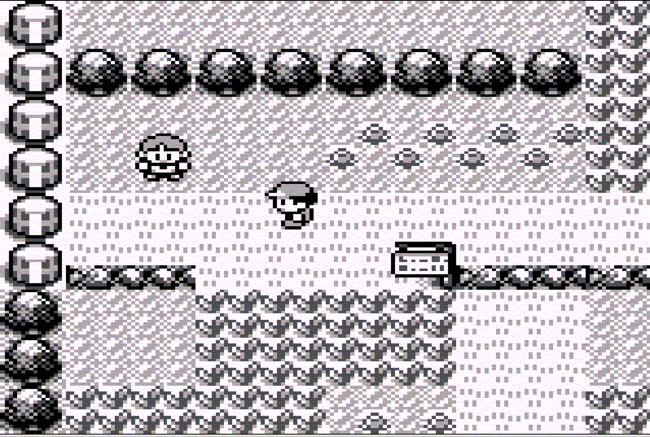Illustration by Jayleen Mercado for Slice of Culture.
I played my first ever “Pokémon” game when I was 9.
On Christmas day of 2007, my uncle gifted me a brand new pink Nintendo DS Lite with “Pokémon Diamond,” which had just been released a year before. I don’t think I even knew what Pokémon was at the time.
Yet somehow, I ended up playing it for, maybe, five hours straight that day, spending Christmas in my cousin’s kitchen alone. And, to this day, I can still play it for hours on end.
Saturday, Feb. 27, marks the 25th anniversary of “Pokémon,” a handheld video game that has thrived for over two decades and has become a generational experience for millions. And as the gamers — many who became attached to the series as a child — continue to grow up and mature, so does “Pokémon.”
Gotta catch ‘em all!
First called “Pocket Monsters” in Japan, the video game was published by Nintendo for its portable Game Boy in 1996 as “Pokémon Red” and “Pokémon Green.” Satoshi Tajiri and Ken Sugimori, who started Game Freak, teamed up as writer and illustrator for the game.
“Pokémon” is a role-playing game where players are trainers who build a small team of “monsters” to battle other monsters on a quest to become, quite literally, the best trainer. Pokémon are divided into types — water, fire, grass, ghost, steel, rock, etc — and each has different strengths and move sets.
The concept came from Tajiri’s childhood hobby of collecting insects and love for anime.
The franchise quickly captured the hearts of thousands of Americans and others around the world. It later turned into a television series called “Pokémon: Indigo League,” which debuted on April 1, 1997.
And one of the fans who were glued to their screens was Tyrell Dickerson.
Dickerson, 24, of Secaucus, got into the series when he was 3-years-old. He watched the anime on television and also had a “large collection” of VHS tapes as well.
He put his skills to the test when he played “Pokémon Sapphire,” which was released in 2002 and included the third generation — commonly known as Gen 3 — of Pokémon. But he said he’s played almost every game of the franchise.
“My favorite Pokémon accomplishment was catching my very first shiny Pokémon (rares),” Dickerson said. “I was on a long car ride to North Carolina and I was playing ‘Pokémon Black’ and I was so excited when I encountered and captured a shiny Deino, which is one of my favorite Generation 5 Pokémon.”

“I honestly don’t know how many hours I’ve spent playing Pokémon,” he added. “I’ve played so much Pokémon over the years it’s hard to even come up with a number.”
Some say on average, it takes about 40 hours to beat a “Pokémon” game. One redditor said they spent more than 60 hours because they wanted to “go slow and explore.”
Between “Pokémon Diamond,” “Let’s Go Pikachu” and “Pokémon Sword,” I’d say I’m at a total of 300 hours of gameplay. Meanwhile, Larry Bonaparte, 23, said he’s probably over 2,500 hours.
Bonaparte, of Jersey City, used to go home right after school, around 3:30 p.m., and catch an episode of “Pokémon.”
“It was part of my schedule to watch the show for the new episode,” Bonaparte said. “Even to this day, I can recite the Pokémon theme song and the ‘Poke’ Rap’ that used to play after every episode finished.
That was my first experience down the rabbit hole and only got worse when I played my first game.”
I Choose You!
Bonaparte also started off with “Pokémon Sapphire” on a Game Boy he borrowed during the summertime.
“(My first favorite accomplishment) was beating Red on Mount Silver as the final boss in the game,” he said. “It took me so long to level up my whole team to stand a chance. I had to actually think versus just overpowering everything! But after losing a lot, I eventually beat him.”
When you start any Pokémon game, you’re greeted by Professor Oak, the go-to guy for all things Pokémon. He offers you three starter Pokémon and you and your rival — or nowadays rival/friend — must choose one Pokémon to start your journey — aka probably the hardest decision of your life.
Unlike the show, where main character Ash Ketchum is left with Pikachu, an electric-type, you choose between a water-type, fire-type and grass-type in the games. Your rival automatically chooses the type that can weaken yours.
The iconic beeps when you click a button and traditional background music as you venture through the long journey tends to stick with you, and is something that can tug at the heart strings of nostalgia.
In the first generation — Gen 1 — of Pokémon, there was 151. Today, there’s about 932.
“Pokémon” is a “shared experience” for generations, according to the National Museum of American History. The museum owns an original collection from a donor who collected “Pokémon” at the height of its popularity.
“These objects collectively help tell the story of ‘Pokémon’ and its impact on American culture, now and into the future,” Justin Stewart Barber wrote.
And just as culture changes, so does mindsets and in-game features.
The Evolution Solution
Like many things, “Pokémon” started off in little to no color.

It wasn’t until the late 1990s around the release of “Pokémon Gold” and “Pokémon Silver” that it was in color. In 2004, after the release of “Pokémon FireRed” and “Pokémon LeafGreen,” the role-playing character became more three-dimensional, but uncustomizable.
This changed in the late 2000s.
Trainers were able to edit tidbits of the character, becoming one step closer to resemble the player behind the screen.
“There have been Black characters like Brock and Nessa that are heavily liked by most of the Pokémon community,” Dickerson said.
In an article on The Mary Sue, Princess Weekes, the author, explains that she was excited to play “Pokémon Sword/Shield” because of characters like Nessa and because gamers now have a variety of color of skins and are not shackled to one tone, face or look overall.
“Part of the reason I can’t wait to play Sword/Shield is because of seeing dark-skinned characters like Nessa in the game,” she wrote. “It means something to me and many other fans who want to be able to play games with more diverse rosters of characters.”
Some even believe the franchise has become more inclusive by creating characters Leon and Raihan in “Pokémon Sword/Shield” who a number of fans consider are a gay couple.
But, though the video game saga was created in Japan, it has dabbled in one thing, and that’s Black culture. The connection between “Pokémon” and Black culture may not be easily visible, but the correlation with the two can’t be completely denied.
“Things like the original PokeRap is also a great representation of the Black community,” Dickerson added.
After every episode of the original series, “Pokémon: Indigo League,” the creators captured its fans and wannabe trainers with a catchy rap song that taught all 151 Pokémon. Like Bonaparte said, he still knows the rap to this day.
“Pokémon” has also had its fair share of references in popular hip-hop songs like “Can You Bounce” by rapper Ice Cube: “I collect them like Pokémon.” ASAP Ferg, Lil Uzi Vert and Denzel Curry are also just a few artists in the rap scene who have spit a verse about Pokémon.
But there have been criticisms where some labeled the franchise as “racist.”
The most known incident is when a 2000 op-ed piece from The Black World Today, said Jynx — one of the original 151 Pokémon — mimicked a negative stereotype of African Americans, “human features: jet-black skin, huge pink lips, gaping eyes, a straight blonde mane and a full figure, complete with cleavage and wiggly hips.”
In 2002, Nintendo tried to mend the backlash by changing the Pokémon’s face from black to purple.
Pokémon Scent-sation!
Still, through over two decades, “Pokémon” has come up with ways to always keep its fans on its toes whether it be mobile app “Pokémon Go,” which marked a historic period in history in 2016; rare Pokémon cards that get sold for thousands of dollars; or announcing the remake of “Pokémon Diamond” and “Pokémon Pearl” to be set for late 2021, causing fans (like myself) to reminisce on those unregrettable hours of training and already considering to pre-order.
Sinnoh.
Remakes.
Confirmed.#PokemonBrilliantDiamond#PokemonShiningPearl pic.twitter.com/z0JIgXyh4x
— Pokémon (@Pokemon) February 26, 2021

Bonaparte told Slice of Culture that the series is still thriving because it brings people together, “the Black community being no exception to that,” and strangers are able to instantly spark friendships.
Dickerson credited the “genius ways” they keep their fans occupied and satisfied. He said “Pokémon Go” made trainers active while the “Pokémon” trading cards and unpacking videos tracked thousands of views for creators including YouTubers Logan Paul, Kristopher London and Mystic7.
But whether it be accomplishments or lessons, thousands of Pokémon fans have something or a memory from the franchise that they hold dear, which makes them come back for more.
“Besides teaching me how to walk while looking down, it has taught me just because your peers or others move on from something does not mean you have to change what you like just because others may not enjoy it anymore,” Bonapart said. “You should do what makes you happy instead about worrying about the opinions of others and stay unique.”
P.S. yes, all the subtitles are Pokémon episode titles.


